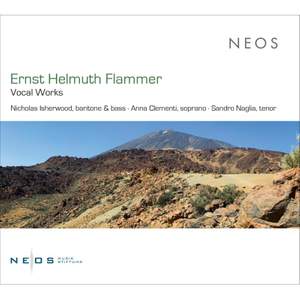The French photo-documentary artist JR and his art, along with Luigi Nono, are paradigmatic for Ernst Helmuth Flammer's work for vocal soloists, with the great singer Nicholas Isherwood being a significant source of inspiration for his composing. Isherwood's broad experimental stock of vocal textures, of various very denatured vocal techniques, a plateau for alienation techniques, and equally, his strongly brushed against the grain expressive palette, offer a broad reservoir of musical commentary levels, semantically expressive even without lyrics.
Spaziofonia - Polimorfia II for 4-channel-tape uses exclusively fundamental materials recorded by Nicholas Isherwood. These materials are algorithmically alienated, transposed, and inverted, meaning that a structure resonates retrogradely.
Homs, gegen das Vergessen ... Paris, aus einem Totenhaus ...Unterwerfung ...? - An epic cantata for solo baritone, searches for truths, truths of the Umanit?, which are not linear, which are not simple, there is no one truth. Each of these seven parts is introduced with the probing question "What is truth?" recurring, as it were, as a refrain.
The title Nach vorn ... 4, spatial ? l'?vocation infini et ?chapp?e for bass voice and tape could read: "Forward ... 4, spatially infinite in the imagination and escaped" (in the sense of no longer graspable, unimaginable). "The world as volition and imagination", as a utopia (!), as a dream (?). Yes and no! Not the world we perceive.
Almer?a, tu terra quemada the six-part text, interrupted by choruses that develop continuously, is juxtaposed with the music, illustrating and commenting in an alienated way.



